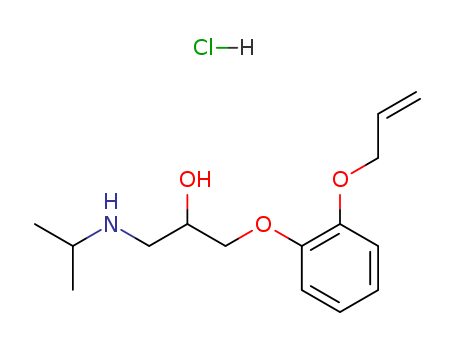Base Information
Edit
- Chemical Name:Oxprenolol hydrochloride
- CAS No.:6452-73-9
- Molecular Formula:C15H24ClNO3
- Molecular Weight:301.813
- Hs Code.:2922190900
- European Community (EC) Number:229-260-5,245-358-0
- UNII:F4XSI7SNIU
- DSSTox Substance ID:DTXSID5021093
- Wikidata:Q27277643
- NCI Thesaurus Code:C66277
- ChEMBL ID:CHEMBL1200745
- Mol file:6452-73-9.mol
Synonyms:Coretal;Hydrochloride, Oxprenolol;Koretal;Oxprenolol;Oxprenolol Hydrochloride;Slow Trasicor;Tevacor;Trasicor;Trasicor, Slow



 Xi
Xi
